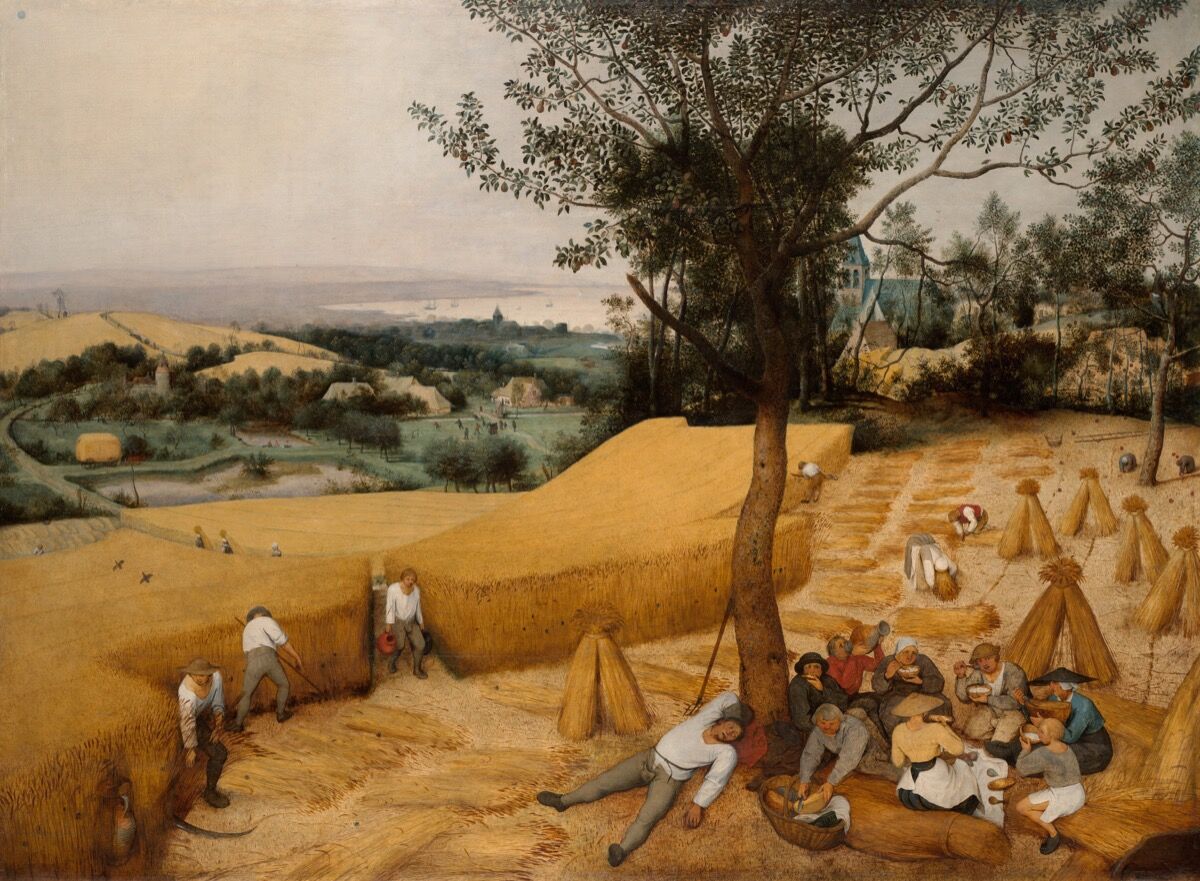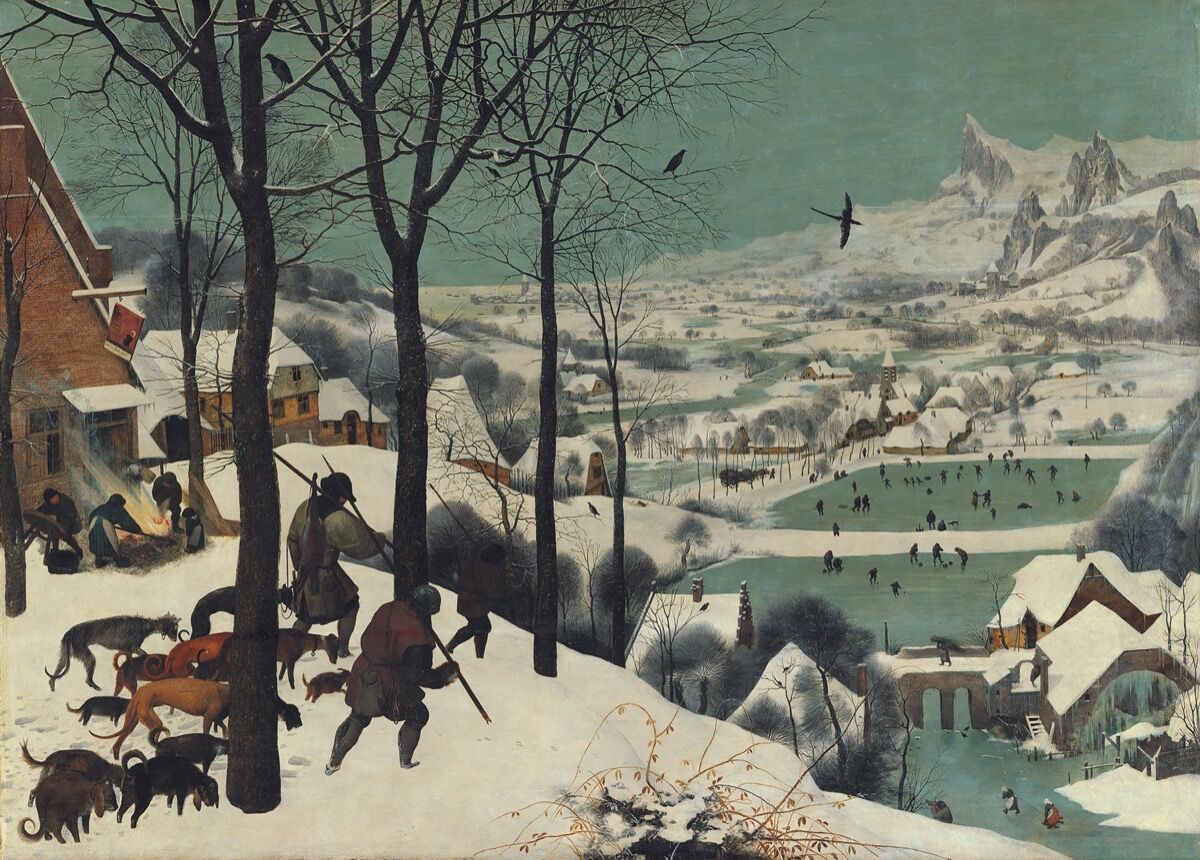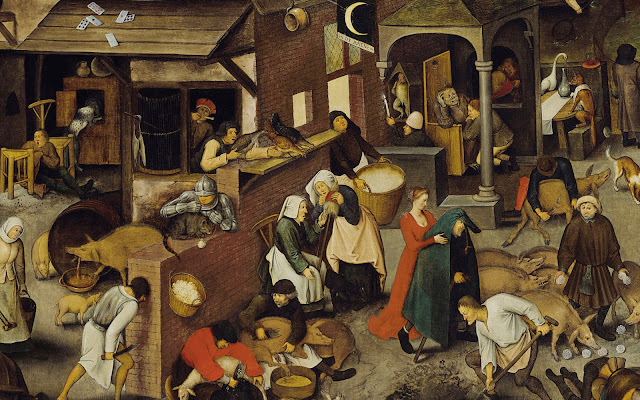This Artwork Changed My Life:
Pieter Bruegel the Elder’s “The Harvesters”

Pieter Bruegel the Elder, The Harvesters , 1565. Courtesy of The Metropolitan Museum of Art.
Elephant and Artsy have come together to present This Artwork Changed My Life, a creative collaboration that shares the stories of life-changing encounters with art. A new piece will be published every two weeks on both Elephant and Artsy. Together, our publications want to celebrate the personal and transformative power of art.
Out today on Elephant is Nathalie Olah on Tomás Saraceno’s “On Air.”
In 2015, in his book Portraits, the art critic John Berger wrote of
: “There remains in our minds the ghost of an idea, which we would never be so brash as to mention—Bruegel was perhaps just a little too simple.” Years before I read that passage, when I was 19, I happened to make a similar statement to Walter Liedtke, curator of Dutch and Flemish paintings at the Metropolitan Museum of Art.
: “There remains in our minds the ghost of an idea, which we would never be so brash as to mention—Bruegel was perhaps just a little too simple.” Years before I read that passage, when I was 19, I happened to make a similar statement to Walter Liedtke, curator of Dutch and Flemish paintings at the Metropolitan Museum of Art.
To be fair, I had no way of knowing that I was denigrating Pieter Bruegel the Elder to Walter Liedtke. He wasn’t wearing his employee ID during my chance encounter with him when I worked in the museum’s gift shop.
“Harvesters,” he said to the postcard that someone had abandoned at the register.
“You know it?” I asked. He seemed taken aback for a moment, but simply smiled in response.
And at 19, I was brash enough to tell Walter Liedtke that I thought Bruegel’s work was too “simple.” In that moment, he was expansive in his kindness and grace by not saying anything in response. He simply took out his museum ID to pay for his purchase.
Six weeks before that conversation, my playwriting professor had brought our small class to the Met specifically to see The Harvesters (1565). Our assignment was to engage with the 16th-century painting, and then write a creative response. A poem, perhaps, as William Carlos Williams had done.
I hated every single minute in that gallery.
At that point in the year, I was uncertain as to whether or not I wanted to continue with playwriting. I’d thought that college would be the beginning of my life, my way of escaping my hometown, my family, and the miseries of high school. Instead, I felt like my college classes were just an extension of those I had in high school, and I felt as out of place with my classmates as I had with my peers from my hometown. I was just as miserable, if not more so—I was still waiting for my life to begin.
And there I was, sitting in front of a canvas dominated by wheat, being asked to write a poem about peasants and trees. My trifling response to The Harvesters merited a C. A few weeks later, at the end of the semester, I dropped out.
Still, Bruegel continued to follow me. Seeing Ligeti’s Le Grand Macabre at the San Francisco Opera, I noticed the story was set in the fictional realm of Breughelland. In John Adams’s Nixon in China,Richard Nixon sings: “On our flight over from Shanghai, the countryside looked drab and grey. ‘Bruegel,’ Pat said.” His canvases floated by in Tarkovsky’s films. On a trip to Vienna, I stumbled across the Kunsthistorisches Museum’s Bruegel gallery—the largest in the world. There, I fell for the elements of chiaroscuro in The Return of the Herd (1565) and the gloomy haze of winter in The Hunters in the Snow (1565).

Pieter Bruegel the Elder, The Hunters in the Snow , 1565. Courtesy of Kunsthistorisches Museum.
I began to accidentally run into The Harvesters every time I went to the Met. After a while, I began to deliberately seek it out. It became a superstition: I couldn’t leave the museum without seeing it, even if in passing. Nothing seemed to change about the work: There still wasn’t a narrative to discern, no conflict or central drama.
But without any narrative force in The Harvesters, Bruegel has the space to present life as it is. In that space, I began to notice—really notice—each person and detail. There were the bare-bottomed monks swimming in the distance. There was a woman bent over in her work, her posture mirroring the angles of her wheat sheaves. One day, when I was in the museum while mildly stoned, I noticed that the two women bent over gathering pears resembled human skulls, augurs of the death and decay that would follow the harvest season.
In the winter of 2015, I thought of Walter Liedtke again. He had tragically died in a Metro-North commuter train crash near (of all places) Valhalla, New York. I remembered, to my own chagrin, the brashness I’d used at 19 when speaking to him. Now, 30 years old, I realized that it was a way of masking my discomfort with who I was. In the year that followed, I would also come to understand that I was no longer brash, but I was still uncomfortable with my sense of self.
I once again found myself face-to-face with Bruegel at the Met in the summer of 2016. But something had changed. My senses, normally in analytical overdrive, had been temporarily blunted by one of my periodic bouts of depression, and I was hoping some art would shake things loose in my brain.
Instead, that fogginess of depression slowed things down and lowered my defenses. With them went my need to analyze, my need to make the work into something it wasn’t. On the bench in front of The Harvesters, I was, for once, able to sit still. Like Bruegel, I began to see things as they were, without searching for a narrative. I had stopped confusing seeing for knowing.
Gestalt psychologists believe that true change occurs not when a person tries to become what she isn’t, but rather when she becomes what she is. In saying that The Harvesters changed my life, what I really mean is that it helped me to become what I am, and comfortable with who I was in that moment. Flaws and all. While I had wanted to run away and build an entirely different life the first time I’d seen it, I realized in this viewing that its purpose, an act of mindfulness, was to help us recognize life as it is rather than trying to make that life something it is not. Whenever I tried to run away from myself, it was there to guide me back.
I sat at the museum until it closed. Later that evening, I sent my former professor a note expressing how much I regretted phoning in his exercise years ago and how I hoped to one day finally have the work figured out. In his response, my professor objected to my characterization of the exercise. To him, I hadn’t phoned it in—even if, at the time, he’d given me a C. The aim wasn’t to figure out the work itself, but to figure out how much one could see when one kept looking. In continuing to look, that’s exactly what I was doing.
Head to Elephant to read its latest story in the series, Nathalie Olah on Tomás Saraceno’s “On Air.”








